#annwn
Explore tagged Tumblr posts
Text


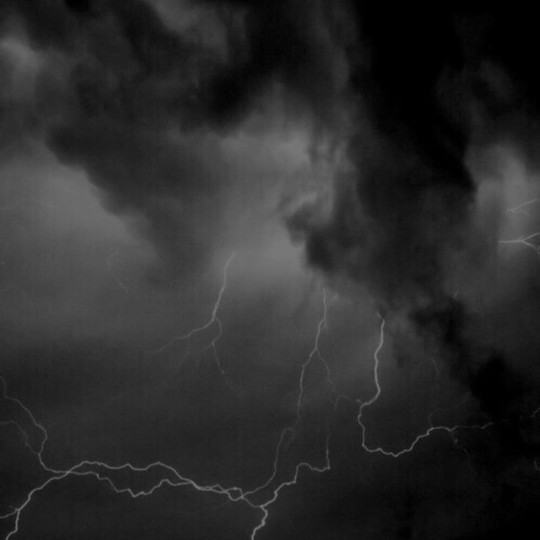
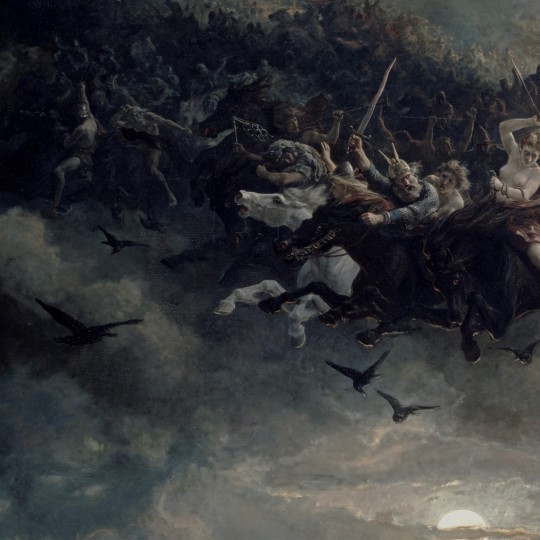
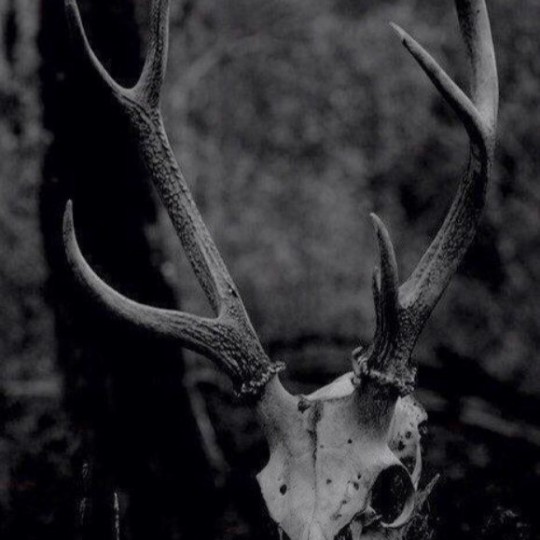
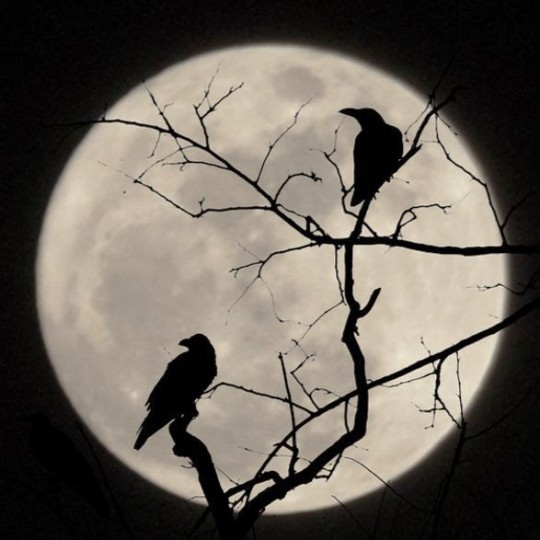



~ Welsh Mythology - Arawn, King of the Otherworld, God of death
Hir yw'r dydd a hir yw'r nos, a hir yw aros Arawn
Long is the day and long is the night, and long is the waiting of Arawn
#welsh deities#paganism#celtic paganism#welsh paganism#welsh witchcraft#welsh wicca#welsh mythology#welsh folklore#mythology#gods and goddesses#the old gods#pagans#celtic pagan#pagan community#paganblr#witchblr#wiccablr#deity work#deity worship#the otherworld#annwn#arawn#wicca community
93 notes
·
View notes
Text
The King of Annwn
Brythonic Paganism Essays: Part I
The Usual Disclaimer: The tales of The Mabinogion and other surviving Welsh texts were once shared orally, passed down across generations, and over vast distances. By the time these stories were finally committed to writing, the Welsh had long embraced Christianity. As a result, what remains in these medieval manuscripts offers only a faint echo of the ancient beliefs held by the Brythonic or Romano-British peoples. Yet, by examining these stories in relation to one another, and drawing parallels with other Celtic or even Indo-European traditions, we may catch glimpses of the older beliefs that inspired them. What follows is simply theory, built upon these comparisons.

There are many contenders for the title of King or Lord of Annwn, the Otherworld in Welsh mythology. So many, in fact, that most Brythonic polytheists I’ve spoken to tend to agree that Annwn, like the mortal world, has multiple rulers. However, I believe these deities share too many similarities to be entirely distinct. Rather, I see them as different aspects or variations of a much older, singular god. Before delving into the gods themselves, let’s examine the key motifs:
The God-King is often depicted as a hunter, accompanied by the Cŵn Annwn—the hounds of Annwn—described as pure white with red ears.
He is locked in an eternal, seasonal conflict, where he can be seen as representing winter, battling against an opponent who embodies summer.
This struggle often revolves around a goddess who symbolizes spring, the earth, or fertility. This mythic framework is incredibly ancient, with perhaps the most well-known version being the story of Persephone in Greek mythology.
The conflict often involves a journey to the Underworld and escalates to such intensity that a mortal king must intervene.
The god is also often depicted as a psychopomp—an entity that guides the souls of the dead to their final destination, much like the Grim Reaper. However, it’s important to note that Annwn wasn’t necessarily viewed as an “afterlife” by its original believers. Instead, it was more of a mystical realm, later misunderstood and conflated with Hell or Hades through the lens of Christian propaganda.
Arawn
Pwyll, King of Dyfed, embarks on a hunt and encounters a pack of white, red-eared dogs bringing down a deer. He claims the kill for himself, only to be confronted by Arawn, the true owner of the hounds, who is also hunting. To make amends for his transgression, Pwyll agrees to a request from Arawn: they will swap appearances and live as each other for one year. Arawn explains that he goes to war every year with Hafgan—a name meaning something like "summer song" or "summer white"—for rulership of Annwn. Despite defeating Hafgan in combat each time, Arawn always loses in the end. As Hafgan lays dying, he taunts Arawn to strike again, and Arawn, unable to resist, delivers the fatal blow—only for Hafgan to be magically revived.
Pwyll agrees to the plan and spends a year living in Annwn disguised as Arawn. Though he shares a bed with Arawn’s Wife every night, Pwyll honors the situation and never takes advantage of it. When the time comes to face Hafgan in battle, Pwyll defeats him but refuses to strike the final blow. With Hafgan dead, his followers recognize Arawn as the true King of Annwn.
Here, we see the recurring motifs of the hunt, the yearly conflict with summer, and the intervention of a mortal king. In this version of the myth, it is the King who travels to the Otherworld, not the goddess who is absent. While the myth lacks a love triangle with a goddess, Arawn’s unnamed Wife does play a role, with her honor preserved, this was included in the story for a reason. The psychopomp element isn’t explicitly referenced in this story, but other familiar themes remain.
Gwyn ap Nudd
Culhwch desires to marry Olwen, the daughter of the giant Ysbaddaden. However, Ysbaddaden knows that he is doomed to die once his daughter marries, so he sets Culhwch forty impossible tasks. One of these is to slay the monstrous boar Twrch Trwyth, a cursed Irish king who now roams Britain as a destructive beast. Culhwch seeks help from his famous cousin, King Arthur, who agrees but warns that to hunt this particular monster, they will need the aid of Gwyn ap Nudd.
Gwyn ap Nudd - whose name means "White Son of Mist" - is somewhat preoccupied at the time, having just abducted the lady Creiddylad from her betrothed, Gwythyr ap Greidawl, whose name means "Victory Son of Scorcher." The ensuing conflict between Gwyn and Gwythyr grows vicious. In one particularly brutal act, Gwyn kills a captured knight, cuts out his heart, and forces the knight's son to eat it, driving him mad. King Arthur intervenes and orders the two rivals to cease their war. From that moment on, they are condemned to battle each other once a year, on May Day, until the end of the world.
Gwyn also appears in the poem The Dialogue of Gwyn ap Nudd and Gwyddno Garanhir in the Black Book of Carmarthen. It can be interpreted from this poem that Gwyddno, unaware that he has been slain in battle, meets a warrior (Gwyn) and asks for his protection. During the course of their conversation Gwyddno learns that the warrior has witnessed many battles and the deaths of many of Britain's heroes, and Gwyddno realises he is now one of those dead heroes as he is speaking to Gwyn ap Nudd.
Later traditions place Gwyn at the head of the Wild Hunt as the King of the Tylwyth Teg, the fair folk, the inhabitants of Annwn, where he rides his host on the night between October 31st/November 1st looking for the souls of the dead. He hunts with the Cwn Annwn, the same pack of dogs Arawn had.
Let's go through all this. We have two examples of a Hunt motif, the Hunting of Twrch Trwyth, and The Wild Hunt. Both can be seen as metaphors for Gwyn's role as a psychopomp, The Wild Hunt is explicitly about the souls of the dead being taken to the Otherworld, and Twrch Trwyth is no ordinary boar, he is a human soul transformed into a monster, and Arthur believes that only with Gwyn with them could they succeed.
We also have a war with summer over a girl. Creiddylad is of uncertain meaning, it could mean "heart-flood", "blood-flood" which is unclear to me, but Gwythyr being "son of Scorcher" seems to be a clear reference to summer, their battle is to commence on May Day, the start of summer, every year, forever. It's also worth noting that the Wild Hunt the night before November 1st is the start of winter. This was of course decided by the (not so mortal) legendary King Arthur.
A note on Gwyn's family: Nudd (pronounced Neathe like breathe) is a god who's name means mist. Getting lost in mist is a sure fire way of getting to Annwn, like a portal, and the Tylwyth Teg, or fair folk of whom Gwyn is king, are said to waylay travelers with mist and fog. Nudd comes from the older Celtic word Nodens, a god associated with healing, specifically but not limited to eyes, as well as dream interpretation. So here we see a god who is responsible for clearing or obscuring vision, both physically and mentally, like mist. Nodens is also closely linked to dogs, hunting and fishing. Lludd is another version of this name, and Lludd is given to be Creiddydlad's father, making her Gwyn's sisters as well as lover, but we don't know for sure if the medieval writers saw Lludd and Nudd as literally the same person, so it's really a matter of opinion.
Gronw Pebr
Gwydion, a magician, trickster, bard and potentially tree deity (more on this in a future essay), has gone to great trouble to bring about the birth of Lleu Llaw Gyffes, Lleu of Many Skills. This includes him stealing divine pigs from Annwn, given to Pryderi ap Pwyll by Arawn and magically impregnating his own sister. As a result Lleu's mother, Arianrhod, has laid three tynghedau on him, which is like a curse or a fate.
One tynged is that Lleu could not marry any woman of any race in this world. So Gwydion, along with his magically talented uncle King Math, created a wife for Lleu out of flowers and named her Blodeuwedd, meaning flower-face. Blodeuwedd and Lleu are happily married until one day, when Lleu is away from home, a hunter arrives.
His name is Gronw Pebr, Gronw the Radiant, and he requests shelter. Blodeuwedd, having never seen another man in her life other than her husband and her creators, falls in love with him. Gronw explains that in order for them to be together, Lleu must die. So Blodeuwedd discovers from her trusting husband the very specific and convoluted means that Lleu could be killed, which involves a spear that takes a year of Sundays to create. She tells Gronw about this, who goes about creating the spear.
When the time comes, Blodeuwedd tricks Lleu into the exact situation in which he can be killed, and Gronw strikes him with the spear. Lleu is "killed" but his body transforms into an eagle that continually rots, and flies away. Using pigs to sniff him out, Gwydion finds the decaying eagle perched in an oak tree, and with his gift of awen (divine talent and knowledge) sings Lleu back to life.
Lleu, Gwydion and Math return for vengeance, and this time it is Lleu who slays Gronw with a spear thrust that pierces the solid stone Gronw used as a shield. Blodeuwedd and her maidens flee, but as they keep looking behind them the maidens fall into a lake and drown and Blodeuwedd is transformed by Gwydion into an owl as punishment, a goddess of flowers cursed to never see the sun again.
This story is a lot more from the point of view of our summer representative Lleu, who's fleshed out far more as a god in his own right in the full telling of it. Lleu specifically is the god of light, as well as being "many skilled" and sharing many characteristics of the "divine son" god that will be explored in the next essay.
Gronw, by contrast, has nothing that indicates winter other than he opposes Lleu and his opposition takes a year of work. He also enters our story as a hunter. The circularity of this conflict is reinforced in the resurrection of Lleu, as winter defeats summer just for summer to return and defeat winter and so on. I am reminded by this resurrection by Gwydion of Hafgan's final strike, which revives him.
Blodeuwedd also gets far more attention in this story than the women in the other tales. A being who is a literal embodiment of spring, fertility and the earth, being made from flowers. It is likely that the owl transformation is a medieval invention. There are other animal transformations in this branch of the Mabinogion that I didn't mention here as they weren't relevant, which also seems to be an addition based on a trendyness of people who shapeshift in medieval literature. However, we also have the maidens falling into the lake, which I imagine is a remnant of the original, in which Blodeuwedd falls in, as the maidens are not really mentioned before so this is an odd detail. Lakes were seen as gateways to Annwn, so here we see Blodeuwedd fleeing to her Otherworldly lover. I personally take the owl to represent Blodeuwedd during the dark half of the year, when she is with her winter lover, awaiting to emerge from the earth in spring.
We have no psychopomping either, but we do have two references to swine herding which seems reminiscent of Culhwch and Olwen. King Math is certainly no mortal, but he seems to be a god involved with magic, judgement and punishment.
A note on Lleu's family: just as Gwyn and Creiddydlad are potentially siblings, so too are Lleu's parents Gwydion and Arianrhod. The story doesn't come straight out and say it, creating the characters of Gilfeathwy and Goewin as stand-ins, probably for the sake of Christian sensibilities. These two are never mentioned again or anywhere else as far as I know, and it is Arianrhod who is pregnant as a result of the whole thing, not Goewin. Some versions even have Arianrhod in Goewin's place as foot holder to Math. Lleu appears as Llefelys in another story, who is brother of Lludd (Nudd). This would make Creiddydlad, the Blodeuwedd-like lady of Gwyn's story, his niece, as well as Gwyn maybe his nephew.
This really nails home how these tales became so mixed up in their countless retellings over space and time before being written down. They spread out and became something unique then smashed back together time and again, but somewhere in there is the important truth. It can be confusing and frustrating, but bare in mind always:
The Gods are not their myths,
Embrace the mystery!
#pagan gods#celtic paganism#paganism#celtic gods#celtic pantheon#celtic mythology#celtic#welsh mythology#welsh history#welsh paganism#brythonic polytheism#brythonic paganism#brythonic polytheist#celtic polytheism#polytheism#mythology#gods#old gods#annwn#arawn#gwyn ap nudd#blodeuwedd#lleu#lleu llaw gyfes#gwdion#arianrhod#rhiannon#the otherworld#religion
40 notes
·
View notes
Text
A Missed Mystery: Who is Hanoun?
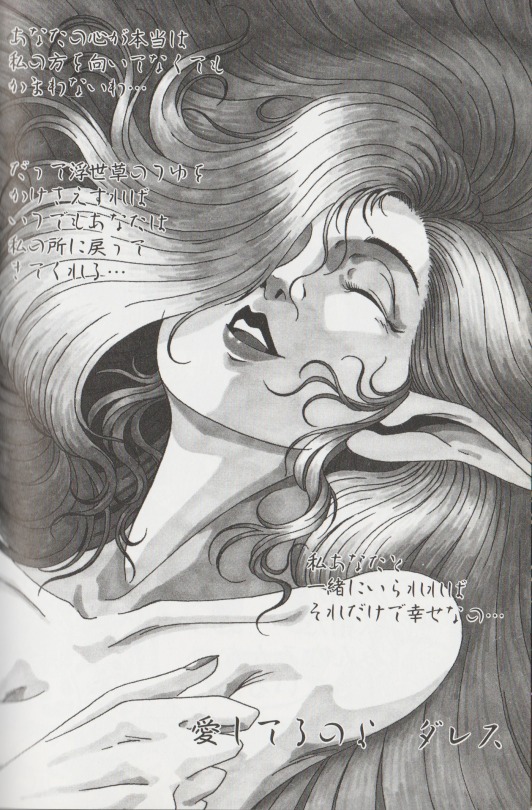
All credit for this discovery to @veskscans
The name of Daleth's fairy lover in smt2 (JP: アヌーン)has almost always been assumed to be correctly translated as "Hanoun", but what the heck is a Hanoun? This identity doesn't fit the scenario nor does it bring up anything but smt with a search. The culprit is probably old smt books that provide romanizations like these:
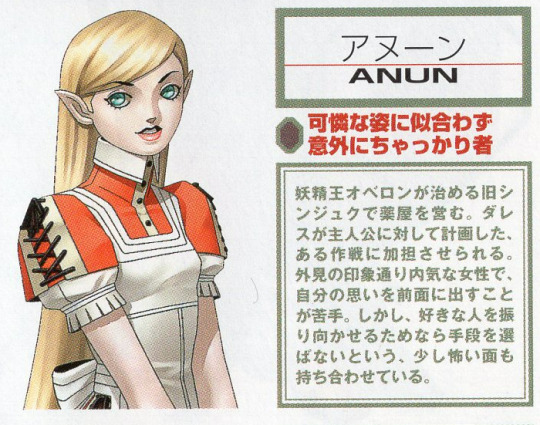
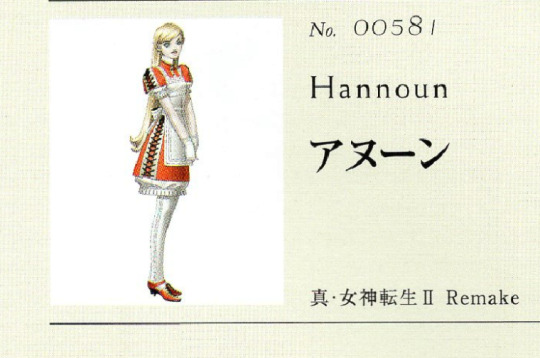
They make some sense considering アヌーン itself is pronounced "ah-noon", but we all know Cu Chulainn isn't really pronounced "koo koo lane ." So what gives?
The truth is they may just be romanization guesstimates for yet another being of Celtic provenance (specifically Welsh, as it turns out).
Vesk tracked down the following entry in Katharine Briggs' ever-relevant-to-smt Encyclopedia of Fairies (a confirmed atlus source):

GWRAGEDD ANNWN.
The entry gives the English phonetic pronunciation gwrageth anoon, which just so happens to be the same as the Japanese. The background of her being a lake maiden who falls in love with a mortal gives more depth to the smt2 scenario than we ever realized.
So, judging by her name in katakana, she should just be romanized as Annwn.
So far, her name has only ever appeared once in an English localized game: as a demon trader in Soul Hackers. Now that the real intention behind her is known, by the time we get to an smt2 remake or port, there will be no excuse for more "Hanoun."
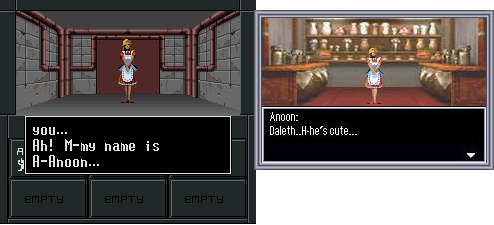
#shin megami tensei#megaten#kazuma kaneko#smt2#hanoun#annwn#daleth#アヌーン#GWRAGEDD ANNWN#welsh folklore#wales#Katharine Briggs#Encyclopedia of Fairies#mystery demons
111 notes
·
View notes
Text

new character, wynn
11 notes
·
View notes
Text



Through the Threshold
4 notes
·
View notes
Text


Нынче утром разбудит песок у воды
Легкий шаг темногривых серых коней
Ах, быстры те псы, у кого на груди полумесяц, как знак чистоты кровей
И раскидистый дуб, и сумрачный тис
Склонят головы пред королевской охотой,
Овеваемой пестрыми крыльями птиц
В этой скачке на грани полета
#welsh mythology#mabinogi#gwyn#gwyn ap nudd#watercolourpainting#watercolours#wild hunt#cwn annwfn#mytholeg cymru#annwn#annwfn#cymru
4 notes
·
View notes
Note
Congrats to you, Vesk, and Eirikr for cracking Annwn! Come onnnnnnn Stonka! I want to believe it's out there!
Thank you, but I wasn't involved in the process- my days of ferreting out these things are pretty much over. It was all Vesk on research, with Eirikr compiling the post for Tumblr. I just sat on my ass and gamed like a goddamn monster.
Stonka, if you're out there somewhere, I just need you to know... I want to kill you for wasting a bunch of my time when I was in college......
8 notes
·
View notes
Text
Waters Within
O’ Annwfn, the watery Otherworld, I am led to you, by hunting dogs and horns, led towards your watery depths. I step into your entrance, world shifting as I descend into the abyss, to come out into your sunlight. Gwyn, my Lord, leads my steps through your flowering fields, and I feel at peace.
#annwfn#annwn#brittonic paganism#brittonic polytheism#brythonic paganism#brythonic polytheism#celtic paganism#celtic polytheism#devotional poetry#gwyn ap nudd#welsh paganism#welsh polytheism
3 notes
·
View notes
Text
Alright, I just made four characters for Collektha Bounty since yesterday.
Arawn the celtic god of the damned , and his three hellhounds ( Cŵn Annwn ) are Réa , Slik , and Böler.
Arawn happens to be Grimskull’s arch rival, but despite of him being called a celtic good of the damned or the horned king, but he is also a hunter who hunts down lost souls or sinners in the human world or in the shadow realm, and taking them to Hell, but just because Arawn is a hunter, doesn’t mean he can’t be a bounty hunter just to get paid.
As for the Cŵn Annwn, ( Réa , Slik , and Böler ), well let’s just say they were adopted by Arawn at the Hellhound Adoption Foundation in the Sloth Ring, of course Arawn used to have nine hellhounds when he adopted them at that time, but unfortunately, Arawn only has three hellhounds, while his hunting partner, or in this case, his ex-hunting partner Mallt-y-Nos (Matilda of the Night) took six hellhounds from him by convincing the hellhounds to join her at her side of new ways to hunt, but that story still remains unknown.

#darkness9000a#darkness9000.a.com#darkness9000#darkness9000.a#Collektha#bounty#collect the bounty#Collektha Bounty#hellhounds#hellhound#Annwn#Arawn#celtic#mythology#god#celtic god#god of the damned#Réa#Rea#Slik#Boler#Böler#demons#hell#cŵn Annwn#white hellhounds#Grimskull’s arch rival#the horned king#pale hellhounds#king of the underworld
5 notes
·
View notes
Text
"The Master said uneasily, "Don't look too closely. The truth has no particular shape."
Diana Wynne Jones, "Dogsbody"
#diana wynne jones#dogsbody#the master#annwn#arawn#orion#actaeon#the truth#truth#nuance#veiled things
4 notes
·
View notes
Text
Mitologia - País de Gales
A maior fonte de informação sobre a mitologia do País de Gales vem do livro Mabinogion, que alguns estudiosos acreditam ser fragmentos da mitologia celta galesa, em especial as primeiras histórias, conhecidas como Os Quatro Ramos do Mabinogion.

Primeiro Ramo:
Arawn: Arawn (Araun) é o rei do outro mundo na mitologia galesa (Annwn). Ele é um grande caçador e mágico habilidoso em mudar de forma.
Pwyll: Pwyll (Púil) é o rei de Dyfed, marido de Rhiannon e pai de Pryderi. Seu nome quer dizer "bom senso".
Rhiannon: Rhiannon é uma mulher do Outro Mundo, inteligente, bela e famosa por sua generosidade. Com Pwyll ela tem um filho, Pryderi e como viúva ela se casa com Manawydan. Rhiannon significa "grande rainha" e ela é considerada uma deusa da soberania, autoconfiança e resiliência. Como uma figura importante, ela aparece no Primeiro e no Terceiro Ramos.
Pryderi: Pryderi (Pridéri) é filho de Pwyll e da deusa Rhiannon. Ele é o único herói a aparecer em todos os quatro Ramos. Seu nome significa "cuidado, preocupação".

Segundo Ramo:
Branwen: Branwen é casada com o rei da Irlanda, Matholwch e algumas pessoas acreditam que ela seja uma deusa do amor e da beleza. Seu nome significa "corvo branco".
Bendigeidfran: Bendigeidfran (Bendigueidvran) é o gigante rei da Grã-Bretanha e irmão de Brânwen e Manawydan. Seu nome é geralmente traduzido como "corvo abençoado". Quando estava morrendo, Bendigeidfran ordenou que seus seguidores cortassem sua cabeça e a enterrassem sob onde hoje fica a Torre de Londres como um talismã para proteger a Grã-Bretanha de invasões estrangeiras. Hoje em dia, na Torre de Londres, há um grupo de corvos cativos que se acredita protegerem a Coroa e a Torre.
Manawydan: Manawydan (Manauídan) é irmão de Branwen e Bendigeidfran. Ele é associado com o deus dos mares irlandês Manannán mac Lir. As aparições mais importantes de Manawydan ocorrem no Segundo e Terceiro Ramos do Mabinogion.

Quarto Ramo:
Arianrhod: Arianrhod (Arianród) é a deusa do cosmos e do destino. Seu nome significa "roda de prata", simbolizando a lua e/ou a roda que tece o destino. No Mabinogion, ela é mãe de Lleu Llaw Gyffes. Na mitologia galesa, a constelação Corona Borealis é chamada de Caer Arianrhod (o Castelo de Arianrhod).
Lleu Llaw Gyffes: Lleu Llaw Gyffes (Lei Lau Guifes) é filho de Arianrhod. Ele foi negado de um nome, armas e uma esposa, mas seu tio Gwydion forneceu-lhe tudo com truques. Seu nome quer dizer “o de cabelos claros com mãos habilidosas” e ele é visto como o equivalente do deus irlandês Lugh.
Blodeuwedd: Blodeuwedd (Blodêiued) é a esposa de Lleu Llaw Gyffes, feita de flores pelos mágicos Math e Gwydion e que se transforma em uma coruja no final do conto. Seu nome significa "rosto de flor" e ela é considerada deusa da beleza, inteligência e independência.
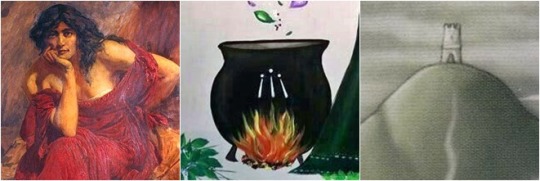
Outras Histórias:
Ceridwen: Ceridwen (Queríduen) é uma feiticeira que aparece na versão mítica da vida do verdadeiro bardo Taliesin. Ela é considerada uma deusa da inspiração, da memória e do tempo.
Awen: Awen (Auen) é uma palavra galesa que quer dizer "inspiração". É junção da inspiração divina com a imaginação, é o que faz o ser humano compreender o significado e a profundidade das coisas. Awen é a poção que Ceridwen prepara em seu caldeirão cuja apenas as três primeiras gotas concedem conhecimento infinito.
Annwn: Annwn, (Anúven) é o Outro Mundo na mitologia galesa. Governado por Arawn, é um mundo adjacente ao nosso; entre os dois mundos não existem fronteiras, apenas a consciência de uma nova dimensão. Annwn é um mundo sem doenças e com comida sempre abundante.
#celtas#mitologia#mitologia galesa#mabinogion#mitologia celta#arawn#pwyll#rhiannon#pryderi#branwen#bendigeidfran#manawydan#arianrhod#lleu llaw gyffes#blodeuwedd#ceridwen#awen#annwn
3 notes
·
View notes
Text
The Gateways to Annwn (The Otherworld)

In Welsh mythology, Annwn or The Otherworld, is a land of paradise and eternal youth. It’s ruled over its king, Arawn, the God of death and traversed by Welsh gods and goddesses like Rhiannon.

Annwn is guarded by Cwn Annwn, the hounds of the otherworld, who are a part of the wild hunt, whose hunting grounds are said to be the mountain of Cadair Idris.
“The howling of these huge dogs foretold death to anyone who heard them".
It’s said that there are a number of entrances to Annwn across the Welsh landscape.
Pentre Ifan
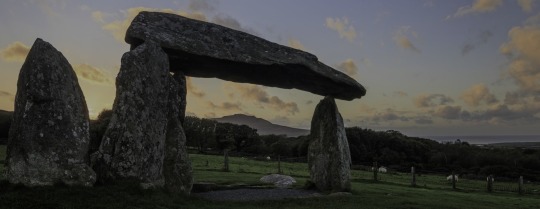
Grassholm

Llyn y Fan Fach

Glas Llyn

Ffynnone
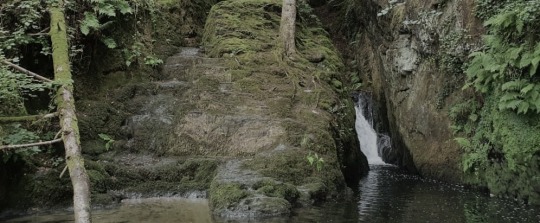
The Berwyn Mountains

#welsh mythology#welsh folklore#wales#welsh history#the mabignogion#the mabinogi#celtic#celtic mythology#celtic folklore#annwn#the otherworld#paganism#celtic paganism#pagan#paganblr#folklore#celtic pagan#pagan community#pagans#wicca#wiccablr#mythology
146 notes
·
View notes
Text
One day I'll wander through meadows green,
Where woods are calm and skies serene,
And all my battles, cares, and pain,
Shall fade like dreams; half-lost, half-gained.
When a distant howl, soft but clear,
Echoes through mist, and drawing near.
I wonder where my old dogs roam,
When from the trees, they race back home.
Each faithful friend, long since gone,
Returns to me, as if no dawn
Had ever risen without their sight,
Leading a host of hounds of pure white.
Their ears are red, their eyes aglow,
And with them comes a shadowed flow;
A rider tall, with knowing grace,
I fear his gaze, yet see his face.
"You know me, don't you?" soft, he speaks,
My heart is light, my memory weak.
No path behind, no end ahead,
No purpose clear, no words unsaid.
I smile at him, no fear to show,
"Yes, my lord, I know you so."
For this is Gwyn, the final guide,
Who leads us where the spirits bide.
#brythonic polytheist#brythonic paganism#brythonic polytheism#welsh paganism#welsh mythology#gwyn ap nudd#annwn#the wild hunt#samhain#halloween#poem#poety#celtic mythology#mythology#my poetry#doglover#when i die
23 notes
·
View notes
Text

the headmaster of the academy, merlin
#my art#original character#original characters#fairytale academy#annwn#oc art#oc artist#wizardposting#wizardblr#wizardcore#wizard#wizard oc#merlin#bbc merlin#<- i'm a fan i can reclaim putting this unrelated art in the tags#i also post bbc merlin fanart
13 notes
·
View notes
Text



Carson Ellis
1 note
·
View note
Text

The Lord of Annwn
1 note
·
View note